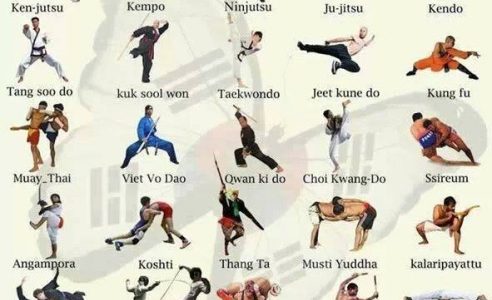Comprehending The Principles And Importance Of Taekwondo Patterns
Comprehending The Principles And Importance Of Taekwondo Patterns
Blog Article
Material By-Albright Baxter
Did you know that there are over 20 various taekwondo forms, each with its very own one-of-a-kind sequence of motions and techniques? These types, likewise referred to as poomsae, play a vital function in the method and growth of taekwondo practitioners.
Yet exactly what are these kinds, and why are they so significant? In this discussion, we will discover the basics of taekwondo forms, their beginnings, and the key elements that make them an essential part of this martial art.
Whether you're a newbie or a seasoned specialist, recognizing the significance of taekwondo types will certainly deepen your gratitude for this old method and enhance your trip towards proficiency.
Origins and Development
The origins and advancement of Taekwondo can be mapped back to old martial arts methods in Korea. It was developed over 2,000 years earlier and has considering that grown into a preferred and globally identified sporting activity.
Taekwondo was heavily influenced by different Korean fighting styles styles, such as Taekkyon and Subak, in addition to Chinese fighting styles. It was initially used as a means of self-defense, but in time, it advanced into an affordable sporting activity that concentrates on striking methods and high kicks.
In the 20th century, Taekwondo went through a considerable transformation and was standard right into its modern-day type. The Korea Taekwondo Organization played a critical duty in this procedure, assisting to establish regulations, techniques, and creates that are still adhered to today.
Crucial Element and Strategies
Currently let's discover the essential aspects and strategies of Taekwondo. To fully understand have a peek here and techniques, it is essential to dig deeper into the following subtopics:
- Stances: Taekwondo stresses the appropriate use of positions, such as the front position, back stance, and horse stance. These positions provide security, balance, and power in carrying out numerous techniques.
- Strikes and Kicks: Taekwondo is renowned for its effective and dynamic kicks, consisting of the front kick, roundhouse kick, and side kick. Strikes, such as strikes and knifehand strikes, are also important techniques in Taekwondo.
- Blocks and Defense: Effective protection is important in Taekwondo. Blocks, such as the high block and reduced block, are utilized to protect against incoming assaults. Appropriate timing and positioning are crucial to efficiently safeguarding oneself.
Advantages and Impact
One of the considerable benefits of practicing Taekwondo is the renovation of fitness and total health. By participating in normal training sessions, you can enhance your cardio health, toughness, versatility, and endurance. Taekwondo involves a range of movements that target various muscle teams, helping you develop a solid and toned physique.
Additionally, this martial art advertises psychological well-being by reducing stress and anxiety and anxiousness degrees. The discipline and emphasis required in practicing Taekwondo can aid boost your concentration and improve your capacity to deal with challenging circumstances.
Additionally, the practice of Taekwondo infuses a feeling of confidence, self-control, and self-discipline, which can positively affect various areas of your life. In general, practicing Taekwondo can result in a healthier and more well balanced lifestyle.
Verdict
So there you have it! Taekwondo forms aren't simply plain regimens, but a representation of the abundant history and evolution of this martial art. By understanding the key elements and strategies, experts can gain numerous physical and psychological benefits.
From raised click the up coming document and stamina to improved emphasis and self-control, taekwondo types have a lasting influence on those who practice them.
So, whether you're a novice or a skilled martial musician, welcome the power of these types and let them take you on a trip via time.
